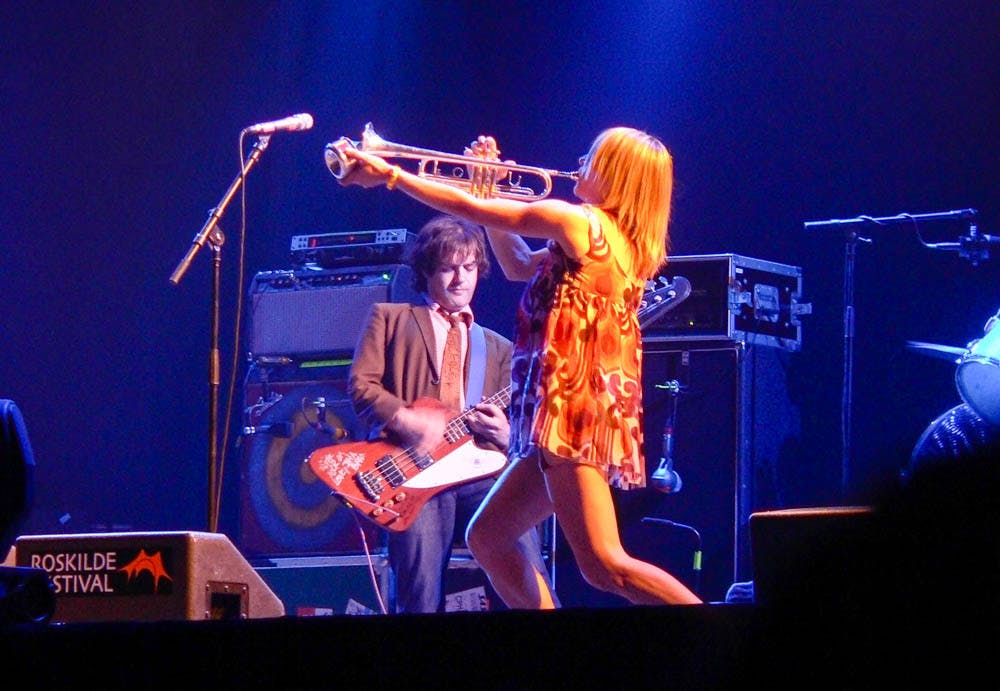The only way to step forward is to look back — in this case, Sonic Youth, comprising Thurston Moore, Kim Gordon and Lee Ranaldo, commemorate their fifth studio album Daydream Nation’s 30th anniversary, reaffirming their influence and reign over underground, alternative music.
Populated with both cultish and casual fans, music unapologetically divides itself into many scenes and genres that jockey themselves with certain words, feelings and vibes. Indie, shoegaze, art punk and college rock are all associated with particular individuals, albums and aesthetics, but what Sonic Youth’s Daydream Nation did for the 1988 scene of underground music unified and defined the alternative for those pushing for a teenage riot.
Daydream Nation characterized the Reagan Era’s disgust at suburban ennui. The opening track, which is arguably one of Sonic Youth’s most recognizable and pop-friendly songs, “Teen Age Riot,” describes an alternative universe where J Mascis of Dinosaur Jr. is president of the United States. Gordon unravels a soliloquy-like entrance, where she hypnotically repeats “spirit desire / face me / spirit desire / don’t displace me / spirit desire, we will fall,” referencing the Stooges’ album “We Will Fall.” Moore interjects with a guitar riff, and the infamous melody of the song begins. It’s a re-establishment of youth aesthetic — it noisily and catchily rallies indie teens and college-aged post-teens all over the world to unite under J Mascis. The music video is enough to charm any precocious teenager lazing in their living room; it thumbs through a rolodex of counterculturist icons: Patti Smith, Sun Ra, Iggy Pop, Nick Cave, Tom Waits and of course, J Mascis himself.
But Daydream Nation isn’t necessarily the first or only album that established what alternative could look like — the late 80s did have The Smiths, Dinosaur Jr. and Joy Division. The album doesn’t just establish or call for an image with the specific purpose of doing so. Within the easy, indifferent air of Gordon’s stream-of-consciousness recitation of “spirits” and Moore’s casual lyrics, Sonic Youth constructs the vague, supposed airs of teenage riot. The band’s fifth album sneakily weaves together simultaneous phantasmagorias of teenage avant-gardism and adolescent fundamentals with the ease of throwing on a sleazebag teen’s outfit.
To look back on Daydream Nation 30 years later, it’s important to reflect on the process through which it was made. Sonic Youth traditionally wrote songs beginning with melody and chord ideas led by Moore, but the band decided to write songs for this album by starting with long improvisational sessions that were eventually developed into songs. This process is certainly traceable when listening to the album; the audience is hypnotized by the wandering, swirling guitar riffs on tracks like “The Sprawl.” “Providence” features a sampling of a Providence payphone, and “Hey Joe” references Joni Mitchell. “Eric’s Trip” concerns Eric Emerson’s acid trip from Andy Warhol’s Chelsea Girls — in short, the album is stuffed with references and influences from the most alternative art, or what is seen as such.
Daydream Nation’s sound is evasive and endless — it starts nowhere, begins everywhere, ends nowhere and finishes everywhere. It does so through its long, Neu!-esque instrumentals and using all four sides of the vinyl pressing. But the album also perfects its sound through experimental, improvised jams showcased on tracks like “Cross the Breeze” and “Trilogy.” Despite the album’s pop-accessibility, Daydream Nation saunters in its ability to blend aggressive, teenage angst with casual, but almost existential sounds. Acts like Beck, My Bloody Valentine, Pavement and Nirvana can all trace a chunk of their roots to Sonic Youth and this album.
This year, Sonic Youth plans to screen unreleased footage and showcase live recordings at “30 Years of Daydream Nation,” which is coming to a number of major cities this November. Some, like the Nov. 19 event in Brooklyn, New York, feature speakers like Sonic Youth’s very own Ranaldo and photographer Michael Lavine.
What does it say about us — that we’re still “looking for the stormy weather?” Daydream Nation’s relevance, even after 30 years, pushes us to acknowledge the album’s landmark influence on American counterculture. The mise-en-scene of Sonic Youth’s sheets of sound defines the bounds of guitar playing, and the album’s flaming subversiveness shines even today. Daydream Nation oscillates between dreamy mysticism and epic, sprawling riffs. This characterizes the so-called teenage riot that Sonic Youth so perfectly captures; it’s the unconventional, aggressive sonic force doubled with relaxed energy. Daydream Nation translates the murky, exciting evasiveness of youth — it celebrates the scruffy, pimply side of life.





